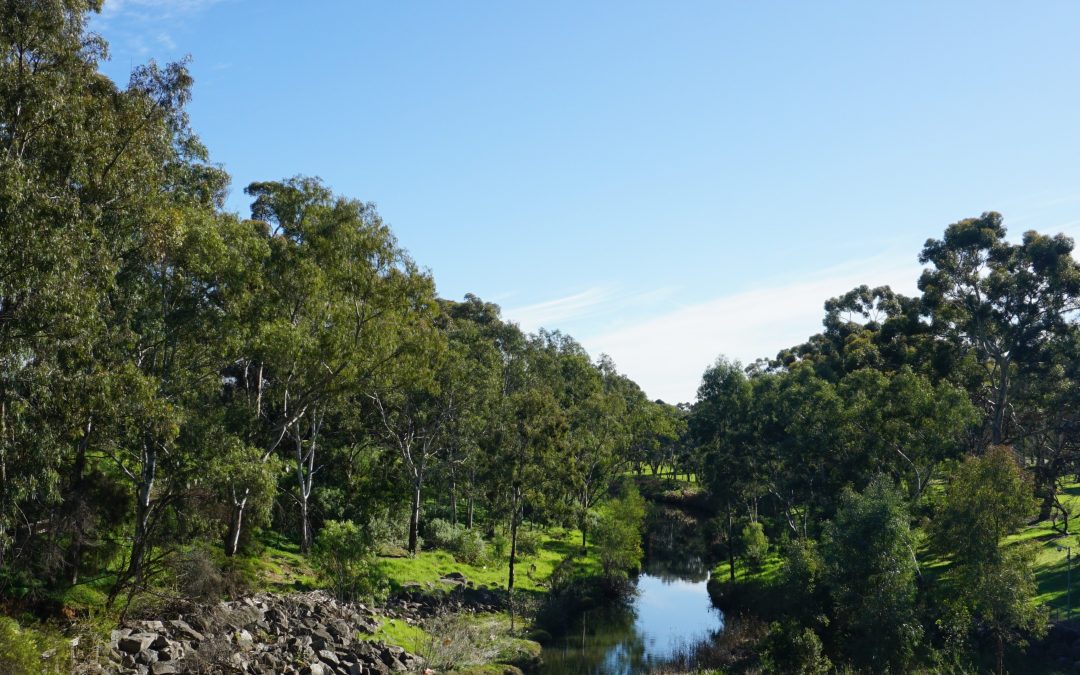The human health and wellbeing benefits we derive from healthy functioning ecosystems are called ecosystem services (Millennium Ecosystem Assessment, 2005). Ecosystem services may be classified as provisioning, regulating, cultural and supportive services (Millennium Ecosystem Assessment, 2005).
• Provisioning services are essentially the things the environment provides us with, and may include food, fibre, fuel, water, environmental microbes).
• Regulating services include the regulation of pollution, climate, the heat island effect, and pathogens.
• Cultural services include religious or spiritual functions of ecosystems, as well as recreation, education and ecotourism.
• Supporting services do not actually have a direct health impact, but are required for the other services to occur. Supporting services include soil formation, nutrient cycling, pollination and photosynthesis.
Importantly, these categories are not necessarily mutually exclusive (Millennium Ecosystem Assessment, 2005).

Jessica Stanhope (PhD)
Lecturer University of Adelaide
Dr Jessica Stanhope is a researcher and educator with a background in physiotherapy and epidemiology. She leads the Environmental Allied Health group at The University of Adelaide, and has extensive experience in cross-disciplinary research and a particular research interest in how healthy ecosystems help improve human health outcomes.
The destruction of ecosystems, including through land clearing and pollution, erodes these ecosystem services, leading to poorer human health and wellbeing. Many of the conditions our patients present with may be prevented and managed through conserving and restoring ecosystems, or through changing the way in which we engage with healthy functioning ecosystems. These health conditions include poor mental health, sleep disorders, injuries, systemic inflammation, metabolic conditions, cancer, infectious diseases, respiratory conditions, poor cardiovascular outcomes, stroke, dementia, multiple sclerosis, adverse birth outcomes, and deficits in motor development, as well as potentially chronic pain (Stanhope et al., 2023). Understanding and capitalizing on ecosystem services may help physiotherapists to better prevent and manage a range of conditions.

What does this mean for physiotherapy?
Understanding the role of ecosystem services may improve the health of our patients, as well as planetary health. This understanding may improve patient care, as physiotherapists may be more aware of the contributing factors beyond the patient’s control that may lead to greater empathy and less victim blaming. Physiotherapists may also work with patients in green and blue spaces, and encourage patients to spend time in these spaces, thereby accessing some of the important ecosystem services (e.g. provision of beneficial environmental microbes and biogenic volatile organic compounds, and cultural services like recreation). These spaces may include therapeutic and/or sensory gardens. Physiotherapists may also help patients engage in meaningful activities like gardening, conservation and restoration activities, or even citizen science projects.
We may also consider non-clinical physiotherapy roles, such as advocacy and public health. For example, physiotherapists may advocate for improved access to health-giving green and blue space access. This advocacy may increase the local green and blue spaces, improve access (both to and within the space), and to optimise the spaces for human health (e.g. increase biodiversity).
Physiotherapists may also advocate for change on a larger scale. This advocacy may be for minimum requirements green and blue spaces, and for policy that reduces pollution, climate change and biodiversity loss; actions which may improve ecosystem services, or at the very least halt the loss of these important services, both locally and globally.

Finally, understanding ecosystem services may lead physiotherapists to engage in sustainable physiotherapy practice. Physiotherapists may utilise treatments that are more sustainable by considering the 4R’s – reduce, reuse, recycle and rethink (Stanhope et al., 2023). Some easy-to-implement improvements might be the judicious use of single-use equipment like incentive spirometry, diagnostic imaging and medications, to minimise the negative impact of physiotherapy on the environment. By shifting the focus of physiotherapy from treatment to prevention, self-management and health promotion, we may also be able to work in a more sustainable manner. Physiotherapists may also consider how equipment is used in both physiotherapy clinical practice and in the self-management we recommend. For example, prescribing exercises with little or no equipment, or that uses equipment that is already in most houses (e.g. bottles, cans, rolled towels) may also reduce our impact on the environment. Physiotherapist may also suggest functional activities as therapy that are more work physically but also have less of an impact on the environment (e.g. hand watering rather than using sprinklers, sweeping hard floors instead of vacuuming). There are already several other articles in Moving Earth that cover sustainable physiotherapy practice, so if you are interested in this area please look at these resources.

Environmental physiotherapy is an exciting new development in our profession that provides us with new opportunities to help improve the health and wellbeing of our patients, our local communities and planetary health.
For further information please see our article:
Stanhope, J., Maric, F., Rothmore, P., & Weinstein, P. (2023). Physiotherapy and ecosystem services: improving the health of our patients, the population, and the environment. Physiotherapy Theory and Practice, 39(2), 227-240. https://doi.org/10.1080/09593985.2021.2015814
Photo credit: All photos by Jessica Stanhope.
References
Dahlgren, G., & Whitehead, M. (2021). The Dahlgren-Whitehead model of health determinants: 30 years on and still chasing rainbows. Public Health, 199, 20-24. https://doi.org/10.1016/j.puhe.2021.08.009
Millennium Ecosystem Assessment. (2005). Ecosystems and human wellbeing. Island Press.
Stanhope, J., Maric, F., Rothmore, P., & Weinstein, P. (2023). Physiotherapy and ecosystem services: improving the health of our patients, the population, and the environment. Physiotherapy Theory and Practice, 39(2),227-240. https://doi.org/10.1080/09593985.2021.2015814


Great article. I’m so glad this is being spoken about. Hopefully the human and eco system connections will be factored in in the mainstream health system one day as a fundamental part of a preventative, proactive and wellbeing approach.
Appreciate the concerns of the environment and relate it to and fro with specifics of Physiotherapy profession. I’m also writing in the same context and will reflect these advices in same.